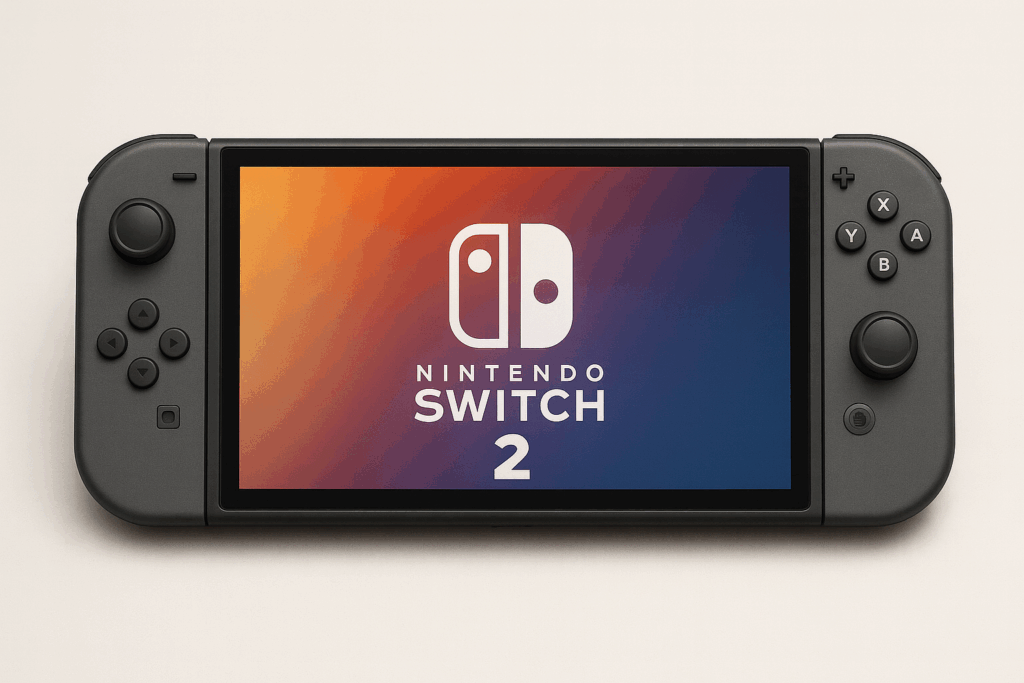Nintendo Switch 2 — Review
There’s a gentle hum whenever you pick up the Nintendo Switch 2, as though it’s aware you expect more — more polish, more fluidity, more of what made the original so beloved, but refined. In many ways, it delivers; in others, it reminds you of the trade-offs that innovation demands.

Strengths
- Display & Visuals
The screen is noticeably larger, sharper. Colors pop more vividly than before, especially in daylight. HDR support adds depth to darker scenes; you can finally see subtle gradations instead of flat shades. The variable refresh rate is a particularly welcome addition — motion feels more natural, less prone to tearing or jitters. - Ergonomics & Build
Joy-Cons feel more balanced in hand. The revised contours reduce wrist fatigue. The overall chassis has a more mature feel — less toyish plastic, more thoughtful engineering. Small things: the kickstand is sturdier; the dock is less noisy, cooler under load. - Backward Compatibility & Game Library
All your old favorite Switch titles run smoother. Some get small visual boosts, some get frame-rate stability improvements. It’s refreshing to revisit games you thought you knew inside out, only to find they feel somewhat reborn. - Portability & Flexibility
The hybrid nature persists — handheld, tabletop, docked — and is improved in subtle ways. The battery holds up decently during moderate use. Switching modes is more seamless.
Weaknesses
- Battery & Power Demands
With the upgraded display and more powerful internals, battery life under heavy use drops sooner than you might hope. Intense gaming, high refresh rates, bright HDR scenes — these all eat power fast. Expect to plan charging more carefully. - Display Trade-Offs
While HDR is present, the contrast doesn’t always reach what OLED fans might expect. Blacks aren’t quite “inky”; in dim lighting some scenes lose punch. The LCD tech is good, but not perfect. - Price & Value Considerations
The more premium build, upgraded internals, newer features come at a cost. If you’re not going to use the “extras” — high frame rates, HDR, or you mostly play older games — some of the upgrades may feel incremental rather than transformative. - Third-Party Support & Game Optimization
There are still titles that don’t yet optimize for the new hardware; some cross-platform games feel held back by lower resolution or frame caps when docked. The promise is there, but execution is uneven across the library.
Unexpected Observations
- Sometimes, even with all the upgrades, you’ll find yourself nostalgically missing the original’s simplicity. The newer fan cooling, the subtle warmth of the chassis during long handheld stretches — these are things you adjust to, but they make you aware of the extra power under the hood.
- The way some games automatically adjust graphics quality based on mode (handheld vs docked) is quietly clever; you don’t always notice the shifts until you look closely. It reminds you Nintendo has long balanced ambition with practicality.
Verdict
The Nintendo Switch 2 is not a reinvention in a single leap — rather, it’s a thoughtful evolution. For fans of the Switch line who want more fluid visuals, better ergonomics, and a more robust “premium hybrid” experience, it represents a significant step forward. If you’re more casual, or already fine with your current Switch, the upgrade may feel nice but not essential.
On balance: it’s worth it, especially if you care about visual fidelity, smoother motion, and revisiting your library with fresh eyes. But go in knowing the compromises — battery, price, and some parts of game optimization — are still part of the package.